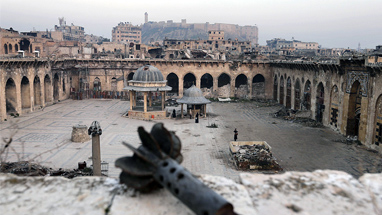SAIDNAYA/Syria, Dec 11, 2017 (BSS/TASS) – Damascus has begun the official process of assessing the damage to its global cultural heritage sites devastated by the Islamic State (IS, a terrorist organization, outlawed in Russia) and is actively restoring the country’s religious shrines.
“Our monastery stands on top of the highest hill on this land. The militants must have thought that the army was certainly going to occupy it as a commanding point. So, they shelled us continuously. God gave us power to endure and, so, He will give us the power to restore what was damaged,” the prior of the Cherubim Monastery, father Abraham, told reporters.
Saidnaya is a small town about 30 km north of Damascus. It is one of the largest Christian pilgrimage centers and one of the few spots in the world where the Aramaic language – the language of Jesus Christ – is still spoken. Saidnaya’s temple complex includes the Cherubim Monastery and Our Lady of Saidnaya Monastery. St. Thomas Roman Monastery (Deir Mar Touma) is located between Saidnaya and the Cherubim Monastery.
Many churches in Syria were decimated because of the civil war that plagued the country. Among the most prominent, IS gangs obliterated the Syriac Catholic Saint Elian Monastery located in the town of Al-Qaryatayn in the Homs Governorate. They used bulldozers to destroy the ancient walls of the unique Epichristian monument and stone headstones there.
The IS terrorists destroyed not just Christian shrines, but Muslim ones as well. Militants turned the Umayyad Mosque of Aleppo, a World Heritage Site, into a firing range and blew it up upon retreating. Restoration experts are clearing the debris manually and restoring the 40-meter minaret. Priceless relics were stolen from the Umayyad Mosque: hair and clothes of the Prophet Muhammad. Terrorists usually sell such artefacts to private collectors on the black market.
The Lion of al-Lat (I century AD) was the first monument that IS terrorists demolished after capturing the museum city of Palmyra in May 2015. The 3.5-meter figure is made of limestone and weighs 15 tonnes. The lion is depicted protecting a gazelle. The inscription in Palmyrenian (an ancient Semitic language) on his left paw reads, “May al-Lat bless whoever does not spill blood on this sanctuary.” The monument was recently transported to the Syrian capital and restored there, and now everyone can marvel at it in the National Museum of Damascus.



